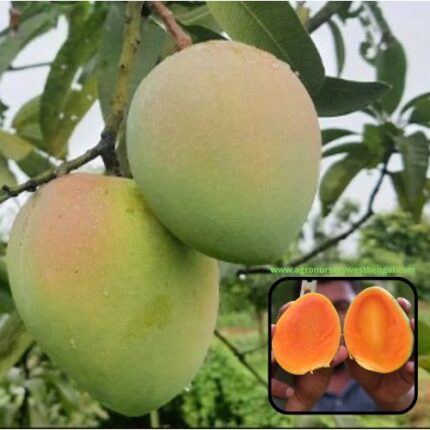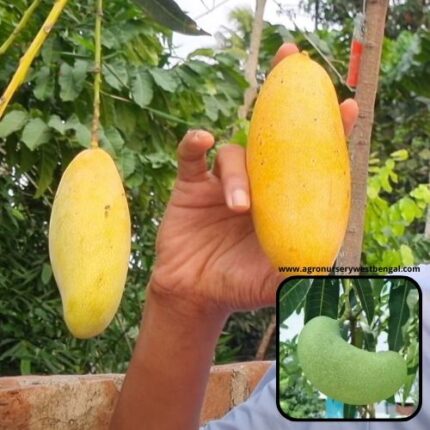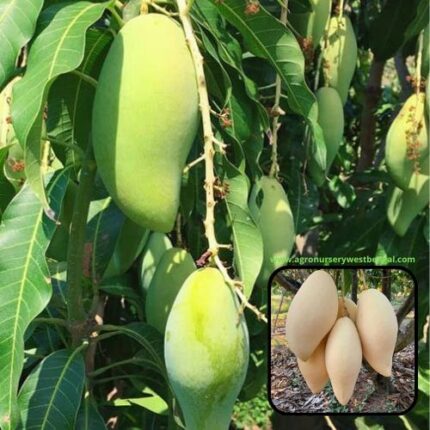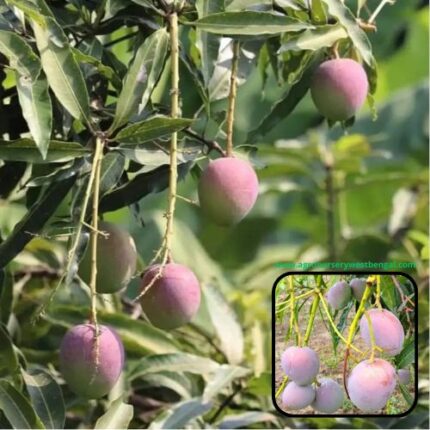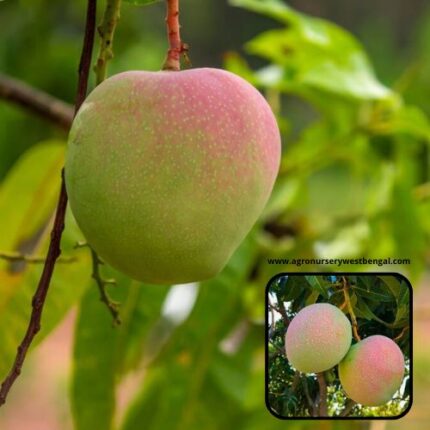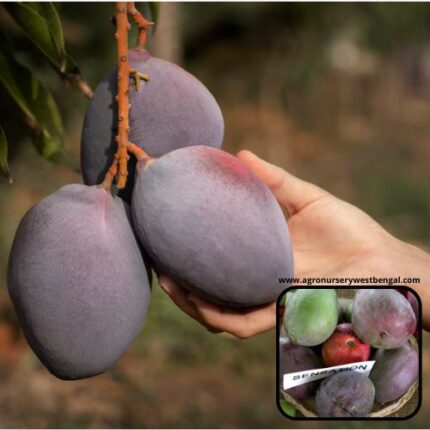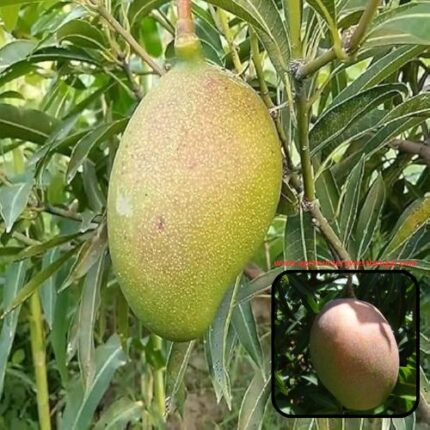


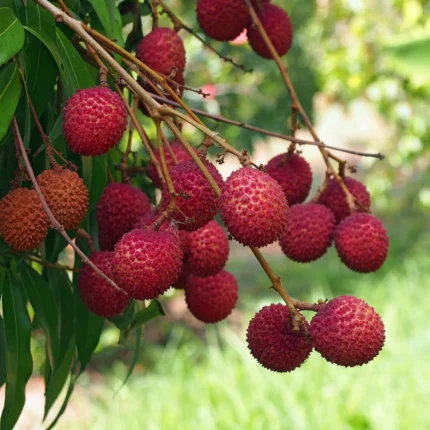

Nagpur orange fruit plants
₹699.00 Original price was: ₹699.00.₹399.00Current price is: ₹399.00.
The “Nagpur Orange” is a famous variety of mandarin orange (Citrus reticulata) primarily cultivated in the Nagpur and Vidarbha regions of Maharashtra, India, and some adjoining parts of Madhya Pradesh. It holds a Geographical Indication (GI) tag, recognizing its unique characteristics attributed to its specific origin. Nagpur is often referred to as the “Orange City” due to its extensive production of this fruit.
Here’s a detailed description of the Nagpur Orange:
1. The Fruit:
- Appearance (Exterior):
- Shape: It’s typically medium-sized and oblate (slightly flattened at the poles), not perfectly round like some sweet oranges.
- Skin: The rind is thin, fine-textured, and easily peelable, often described as a “loose jacket.” This makes it very convenient for eating fresh. The color ranges from yellowish-green to bright orange when ripe. Some might have a slightly pockmarked or rustic exterior.
- Appearance (Interior):
- Pulp: The flesh is tender, juicy, and usually a vibrant saffron or orange color. It’s segmented, with each segment bursting with juice vesicles.
- Seeds: It generally contains small, ellipsoid seeds, which are pointed at one end and green inside. While not seedless, the number of seeds is often manageable.
- Taste and Aroma: This is its most distinguishing feature. Nagpur oranges are celebrated for their excellent blend of sweetness and a characteristic tanginess/acidity. They offer a refreshing balance, making them less overwhelmingly sweet than some other orange varieties. They also possess a good, distinct flavor and aroma.
2. The Plant (Tree):
- Botanical Classification: It’s a mandarin orange (Citrus reticulata), not a sweet orange (Citrus sinensis).
- Growth Habit: The Nagpur Orange tree is a spreading shrub or a small tree, typically reaching a height of about 7-8 meters (23-26 feet). It exhibits profuse branching, often starting at 1-2 meters from the base, with slender branches arranged spirally.
- Leaves: The leaves are evergreen, glossy green, and typical of citrus foliage.
- Flowers: The tree produces small, white, and fragrant flowers.
- Root System: It has a tap root system that can go down 1-2.5 meters, along with plenty of fibrous roots.
- Yield: A mature tree (8 years and above) can yield a significant amount of fruit, typically 700 to 1200 oranges per year.
3. Cultivation and Seasonality:
- Climate: Nagpur oranges thrive in the hot, semi-humid tropical climate of the Vidarbha region, characterized by hot, dry summers and mild winters. This specific climate, along with the unique black clay soils (Entisol, Inceptisol, and Vertisol), is believed to impart the distinctive qualities to the fruit.
- Harvest Seasons (Bahar): The orange crop grows twice a year in the region, linked to different flowering seasons:
- Ambiya Bahar: Fruits resulting from monsoon season blossoming (June-July) are harvested from September to December. These tend to have a slightly more sour or tangy taste.
- Mrig Bahar: Fruits resulting from winter blossoming (January-February) are harvested around January-February and are generally sweeter.
- Propagation: Main means of propagation is by seeds, but it is also commonly propagated vegetatively by T-budding for consistent quality and faster yield.
4. Uses and Benefits:
- Fresh Consumption: Due to its easy peelability, juicy pulp, and balanced taste, the Nagpur Orange is primarily consumed fresh as a table fruit.
- Juicing: It’s excellent for fresh juice, though some sources mention that the juice can develop a slight bitterness (due to limonin in seeds/fiber) if not processed correctly for commercial use.
- Culinary Uses: Used in various culinary preparations like jams, marmalades, squashes, candies, and desserts like orange burfi and halwa. The zest is also valued for its aromatic essential oils.
- Nutritional Value: Nagpur oranges are a nutritional powerhouse:
- Vitamin C: Very rich in Vitamin C, a powerful antioxidant that boosts immunity. (Around 35-55 mg per 100 ml juice).
- Dietary Fiber: Good source of fiber, aiding digestion.
- Antioxidants: Contains compounds like hesperetin, naringin, and naringenin.
- Minerals: Provides potassium, calcium, phosphorus, and iron.
- Carotene: Contains carotene, a precursor to Vitamin A.
- Low in Calories: A healthy, low-calorie fruit.
- Health Benefits: Supports immunity, improves digestion, beneficial for heart health (due to potassium and antioxidants), and provides overall well-being.
The Nagpur Orange is not just a fruit; it’s a symbol of its region, known and celebrated for its unique flavor profile that balances sweetness with a refreshing tang





